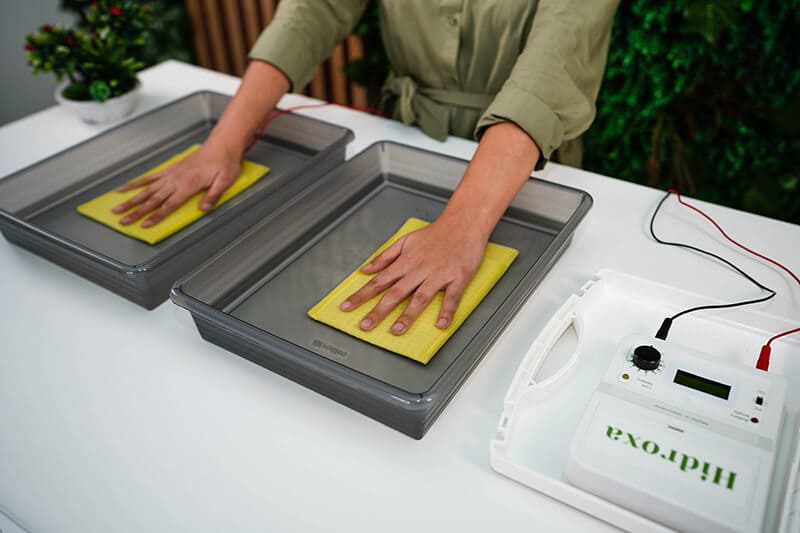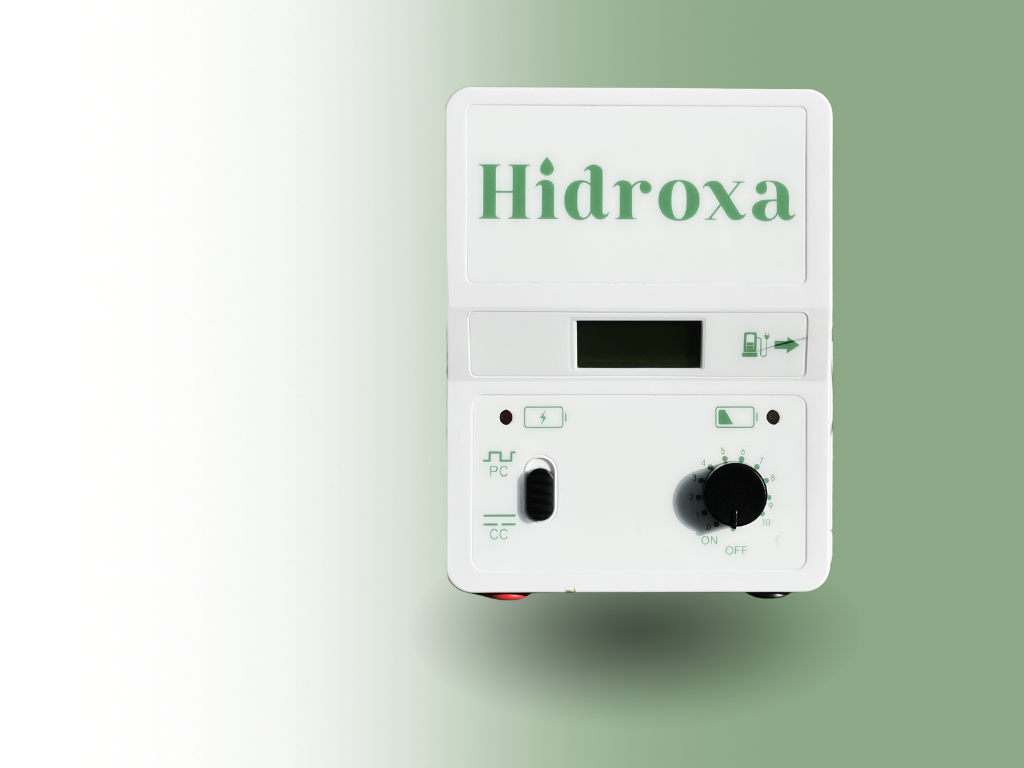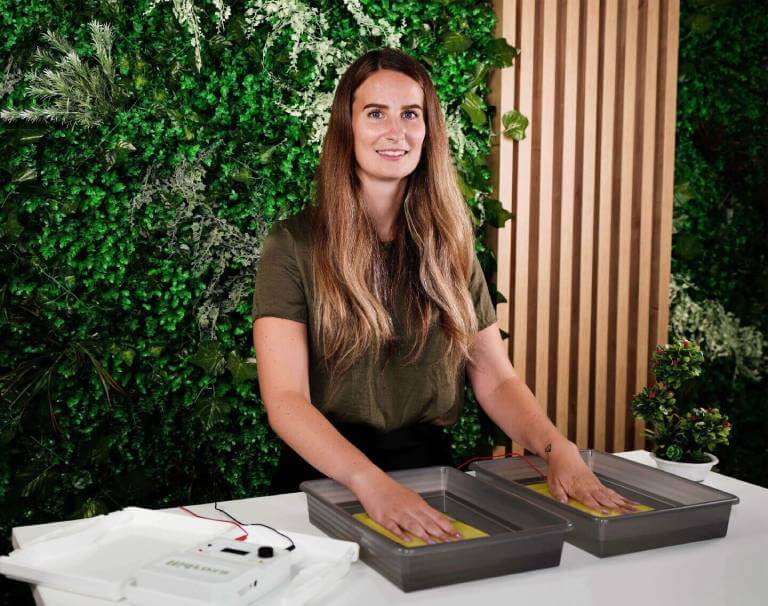Iontophoresis Procedure: Say Goodbye to Excessive Sweating
Ready to explore iontophoresis? Welcome to our guide on the iontophoresis procedure, an effective treatment for excessive sweating, also known as hyperhidrosis. This article covers all you need to know about the procedure, including steps before, during, and after treatment. Iontophoresis is not only a long-lasting and cost-effective solution compared to other treatments, but it also significantly eases the discomfort of those with hyperhidrosis. Continue reading to learn how iontophoresis can help you manage your sweating issues.
What is iontophoresis?
Iontophoresis is a non-invasive medical procedure, a medical device, that uses a mild electrical current to deliver medication or other chemicals through the skin. Primarily used to treat hyperhidrosis (excessive sweating), this procedure is gaining popularity due to its effectiveness and cost-efficiency. Iontophoresis can also be performed at home, using portable and user-friendly devices that have become increasingly popular in recent years. These devices are designed for personal use and often require the addition of substances to enhance the desired effect. While the exact mechanisms through which iontophoresis works are still not fully understood, it is believed to create a temporary blocking effect on nerve cells connected to the sweat glands.

Iontophoresis procedure: a step-by-step overview
Pre-Treatment: Getting Ready
Before starting the iontophoresis procedure, it’s important to understand and follow certain preparatory steps. Consult with a healthcare provider who is experienced in this area who will evaluate your medical history to ensure iontophoresis is suitable for you and exclude other underlying causes of your excessive sweating. They will guide you through the process and answer any questions. During this consultation, your healthcare provider will assess your condition and suggest the best treatment approach. It's essential to inform them of any medical conditions and current medications.
You’ll need to prepare the necessary equipment, including an iontophoresis machine, electrodes, and a container for the solution, typically tap water.
Skin preparation for iontophoresis
Before undergoing the iontophoresis procedure, you can prepare your skin with a few steps. This preparation plays a key in ensuring the treatment is as effective as possible and reduces the risk of any skin irritation. Here's a step-by-step guide to preparing your skin for iontophoresis:
- Clean the skin: Start by thoroughly cleaning the area where the iontophoresis will be applied. Use a mild, non-irritating soap to gently wash the skin. This step is essential to remove any dirt, oil, or residue that might hinder the effectiveness of the treatment.
- Dry thoroughly: After washing, pat the skin dry with a clean towel
- Check for cuts or abrasions: Inspect the skin for any cuts, abrasions, or broken skin. If you find any, it's important to cover these areas with a thick layer of Petroleum jelly. This is because open wounds or broken skin can be more sensitive to the electrical current used in iontophoresis, which might cause discomfort or irritation.
- Avoid applying skin care products: Before the procedure, avoid applying any lotions, creams, or deodorants to the treatment area. These products can interfere with the electrical current and also may react negatively with the process, potentially causing skin irritation.
- Optional skin Treatments: In some cases, your healthcare provider might recommend pre-treating the skin with specific products to enhance the iontophoresis treatment's effectiveness.This could for example be treating an existing eczema before commencing iontophoresis treatment.
- Room temperature considerations: Ensure that both the water used in the procedure and the treatment room are at a comfortable temperature. Too cold or too hot environments can affect skin sensitivity and the overall comfort during the treatment.
Anti sweat machine
Our Hidroxa SE 20 iontophoresis machine is easy to use and clinically tested for treating excessive sweating of palms, feet, face, and armpits.
Iontophoresis is a scientifically proven method that works for approximately 95% of our customers. You can reach its full effect with 12 treatments.

During treatment: the procedure
The iontophoresis procedure typically takes about 20-40 minutes.
Key steps during the procedure:
1. Preparing the setup: Start by filling a container with tap water and immersing the affected body area (like hands or feet) into shallow trays of water. For the armpits, wet the electrodes and place them soaking wet, one in each armpit. For some, using mineral water instead of tap water might be an idea. Especially if a few weeks have passed without effective results. Mineral water can offer a different ion composition, which might enhance the treatment for some individuals.
Begin the treatment by slowly increasing the current until you feel a tingling sensation. The current level should be the level at which you begin to feel discomfort/pain and then reduce the current by a notch. It should not hurt.
Gently place the affected body part, like hands or feet, into the water. Ensure the water level is adequate to cover the area completely but not so high as to cause discomfort.
Adding a small amount of baking soda to hard or salt to the water during iontophoresis can improve conductivity, potentially making the treatment more effective. Start with a small quantity, like a teaspoon per liter of water. It's important to observe your skin's reaction and consult a healthcare professional, especially for sensitive skin.
2. Starting the treatment: Once everything is set up, begin the iontophoresis by gradually increasing the electrical current. You should feel a mild tingling sensation, which is normal, but it shouldn't cross into painful territory. If discomfort occurs, reduce the current immediately.
Adjusting the Intensity: Find a comfortable intensity level and maintain it throughout the session. The typical duration is about 20 to 40 minutes, but this can vary based on individual needs and the advice of your healthcare provider.
3. Monitoring the process: Stay relaxed and monitor your body's response to the treatment. If at any point the sensation becomes uncomfortable, adjust the settings or stop the treatment and consult with your healthcare provider.
Post-treatment: maintaining results
Post-procedure care in iontophoresis is minimal, making it a convenient option for many. Initial treatments may be frequent, but over time, they become less needed, adding to the long-term cost efficiency.
Skin care: After completing the iontophoresis session, if you notice any dryness or irritation, applying a mild moisturizer can help soothe the skin. Choose products that are gentle and free from irritants to maintain skin health.
Follow-up schedule: It's crucial to stick to the treatment schedule recommended by your healthcare provider. This may involve multiple sessions per week initially, which might reduce over time as your condition improves.
Activity resumption: Generally, you can resume your normal activities immediately after the iontophoresis procedure. There's no downtime required, allowing you to continue with your daily routine without interruption.
Other applications of iontophoresis
Iontophoresis is used not only for hyperhidrosis but also in physical therapy and transdermal drug delivery. It’s effective for targeted medication delivery, reducing pain and swelling in medicine and physical therapy, as well as enhancing transdermal patch drug absorption.
Long-term benefits and cost-effectiveness
One of the most appealing aspects of the iontophoresis procedure is its long-term cost-effectiveness compared to other treatments. While upfront costs may exist, the decrease in frequency over time means fewer sessions and less overall expense.
Why choose iontophoresis?
- Reduced long-term costs: Fewer treatments over time mean less spending.
- Effectiveness: Consistently high success rates in reducing sweating.
- Non-invasive: No surgeries or invasive procedures involved.

Iontophoresis vs other treatments
When compared to other hyperhidrosis treatments like Botox injections or surgery, iontophoresis stands out due to its non-invasive nature and cost-efficiency. It's a preferred choice for those seeking a balance between efficacy and affordability.
Frequently asked questions about iontophoresis
The iontophoresis procedure typically causes a tingling sensation, which is a normal response to the low-level electrical current. It should not be painful. If you experience discomfort, the device's intensity can be adjusted to a more comfortable level. The procedure is designed to be therapeutic and tolerable, not painful.
Iontophoresis is not recommended for everyone. Specifically, it should be avoided by individuals with pacemakers or defibrillators, as the electrical current can interfere with these devices. People with epilepsy, those with metal implants, and pregnant women should also refrain from using iontophoresis, due to potential risks and the lack of comprehensive studies on its effects in these conditions.
Iontophoresis is generally effective for managing hyperhidrosis (excessive sweating). Many users report a noticeable reduction in sweating after consistent treatments. The level of effectiveness can vary depending on individual factors like the severity of the condition and adherence to the treatment regimen. While it may not eliminate sweating completely, it typically leads to a significant improvement, enhancing the user's quality of life.
When performed properly, iontophoresis is a safe procedure. However, it is essential to follow the recommended guidelines to prevent any potential risks. In rare cases, improper use or prolonged exposure to the electrical current may lead to temporary tingling or redness in the treated area. It is crucial to discuss any concerns with a healthcare provider to ensure safe and effective treatment.
Iontophoresis can provide long-lasting results, but they are not permanent. For conditions like hyperhidrosis, regular maintenance sessions may be necessary to sustain the desired outcome. The frequency of maintenance sessions will be determined by the individual's response to treatment and the severity of the condition.
The cost of iontophoresis treatment can vary depending on several factors, including the location of the treatment facility, the expertise of the healthcare provider, and the specific condition being addressed. Generally, the cost can range from 300 to 800 EUR for an iontophoresis device.
Summary: your path to a sweat-free future
The iontophoresis procedure is a cost-effective solution for excessive sweating. It offers long-lasting benefits, helping you manage hyperhidrosis effectively. If you're considering this treatment, consult with a specialized healthcare provider for personalized advice. Embrace the potential for a more comfortable, sweat-free life with iontophoresis.